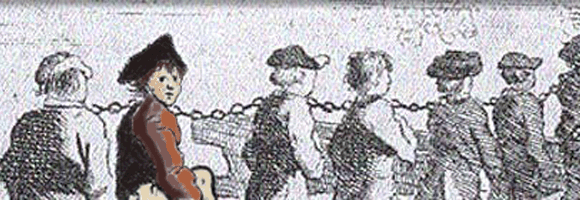London Lives 1690-1800

London Lives provides a fully searchable edition of 240,000 manuscript pages from eight London archives and 15 datasets, giving access to 3.5 million names.
Contents
Main URL
Description
London Lives makes available, in a fully digitised and searchable form, a wide range of primary sources about 18th-century London, with a particular focus on plebeian Londoners. It includes over 240,000 manuscript and printed pages from eight London archives and is supplemented by 15 datasets created by other projects. It provides access to historical records containing over 3.5 million name instances. Facilities are provided to allow users to link together records relating to the same individual, and to compile biographies of the best documented individuals.
While the bulk of the sources included concern criminal justice and poor relief, there are also records of a guild (the Carpenter's Company) and a hospital (St Thomas's), as well as databases of tax and voting records, wills, fire insurance registers and urban directories.
To avoid duplication, the Old Bailey Proceedings and Ordinary's Accounts, available on the London Lives site, are not included in the London Lives data in Connected Histories. This is because they are already included in Connected Histories as part of the Proceedings of the Old Bailey Online.
Strengths and weaknesses
The research questions of the project which created London Lives focused on the lives of plebeian Londoners, so the sources included are most appropriate for studying the lives of non-elite people. Given the sheer volume of surviving records, not all relevant records could be included. On the other hand, the inclusion of the externally created datasets, together with the fact that many records of poor relief and criminal justice include men and women from the middle and upper classes, means that a much wider range of topics can be studied. See the site's Rationale for the project and choice of sources for further information.
London Lives provides access to the largest body of transcribed manuscripts ever created. The transcriptions, however, are subject to some degree of error. With a perfectly clear and well-formed original text, an accuracy rate well over 99% was achieved. However, difficulties in deciphering 17th- and 18th-century handwriting, fading, tears and blots in the original, and distortions introduced by the processes of microfilming and image digitisation reduced the level of accuracy in some places. Where a perfectly accurate reading of the text is required, users are strongly advised to consult the original document images also provided in London Lives, or if necessary the original document in the relevant archive. The images provided can be enlarged by scrolling a mouse over the image. To compensate for the possibility of transcription errors when searching, users are advised to use alternative spellings and wildcards.
As explained above, the markup of names, dates and places was also subject to a degree of error, particularly in the case of place names. To obtain comprehensive results, searches for this information should be supplemented by keyword searches.
Technical Methods
The main body of manuscript text in London Lives was digitised by the process of double rekeying, in which the text was transcribed twice, by two different typists. The two transcriptions were then compared by computer and differences were resolved manually. Names, occupations, places and dates were then tagged by a process of manual and automated markup. As explained on the site's About this project page, however, the markup was neither comprehensive nor entirely accurate, and name and place searches in this resource should be supplemented by keyword searches. Names were checked most carefully, but are marked up only where there is both a surname and a forename.
The externally created databases included were created by several different scholars over a period of more than two decades, and for the most part these were included in London Lives without any changes. Where present, separate fields in the databases were used to identify names, dates and places for searching.
About the project
London Lives was a collaborative project between the University of Hertfordshire and the University of Sheffield. Primary funding was provided by the Economic and Social Research Council. Project directors were Professors Tim Hitchcock and Robert Shoemaker and the Project Manager was Dr Sharon Howard. Implemented by the The Digital Humanities Institute at the University of Sheffield and the Higher Education Digitisation Service at the University of Hertfordshire, London Lives was published by The Digital Humanities Institute. For further information, see the project's About this project page.
Contact
Source Types
- Local records
Access
- Free
Time Period
1690-1800
Publisher
The Digital Humanities Institute